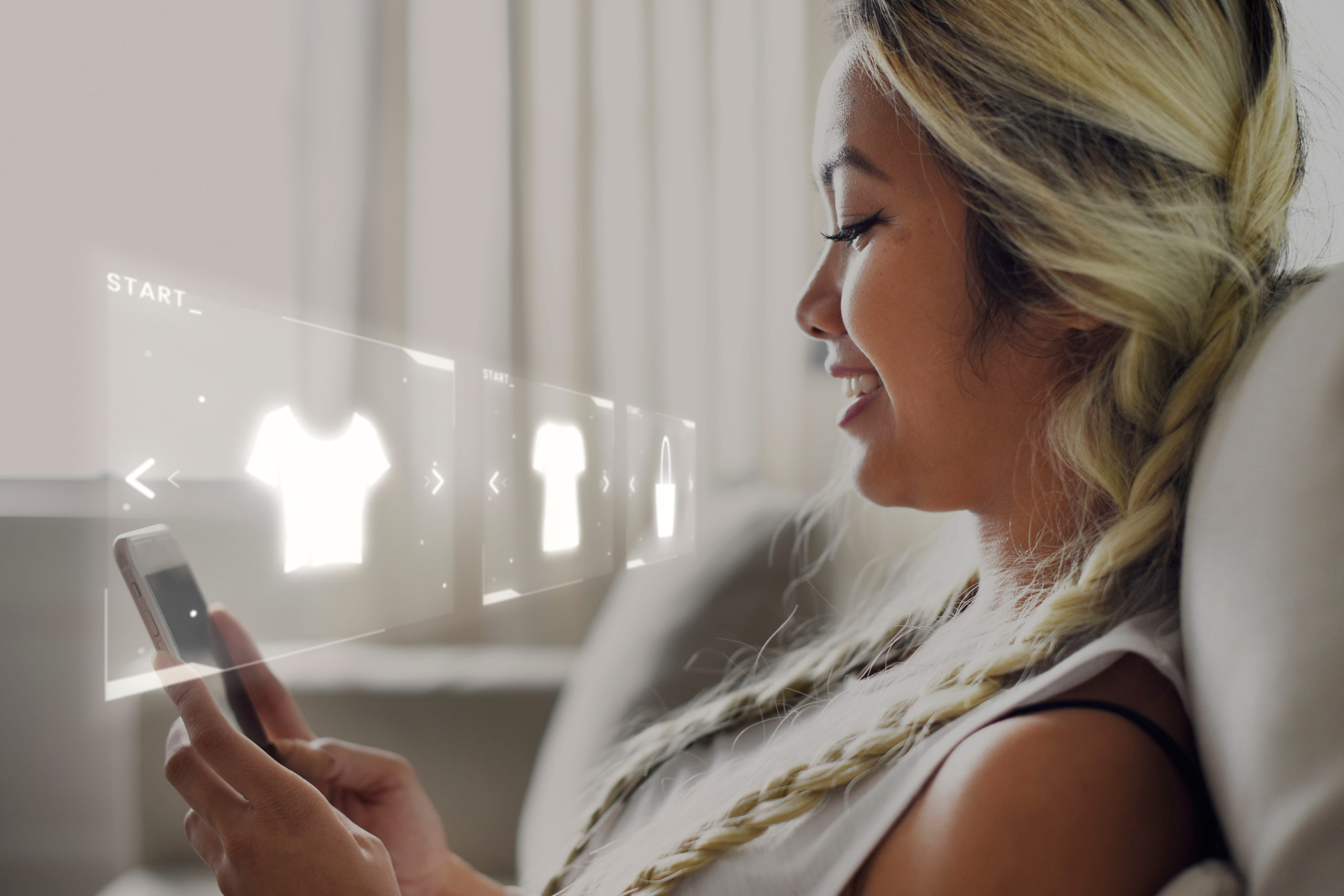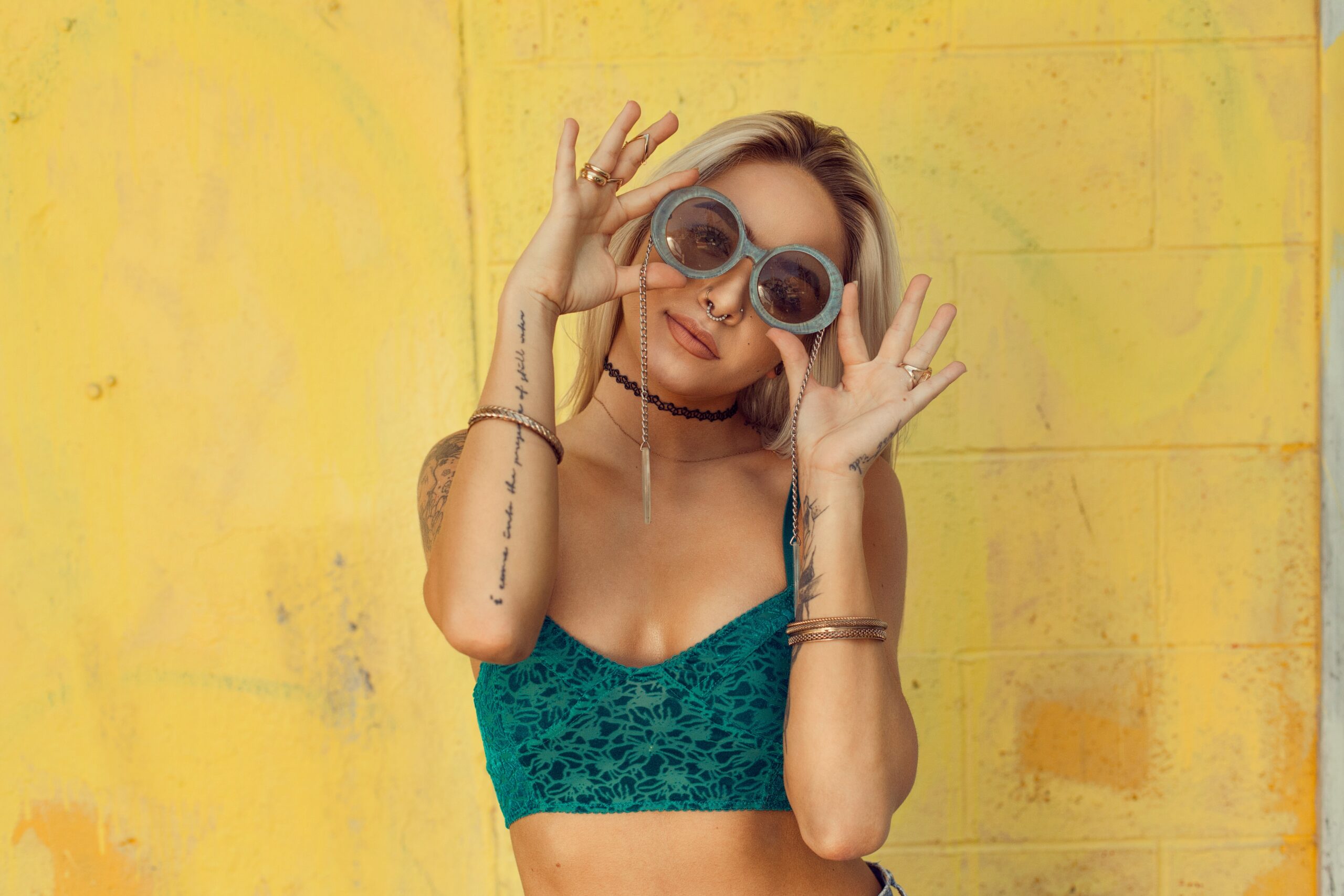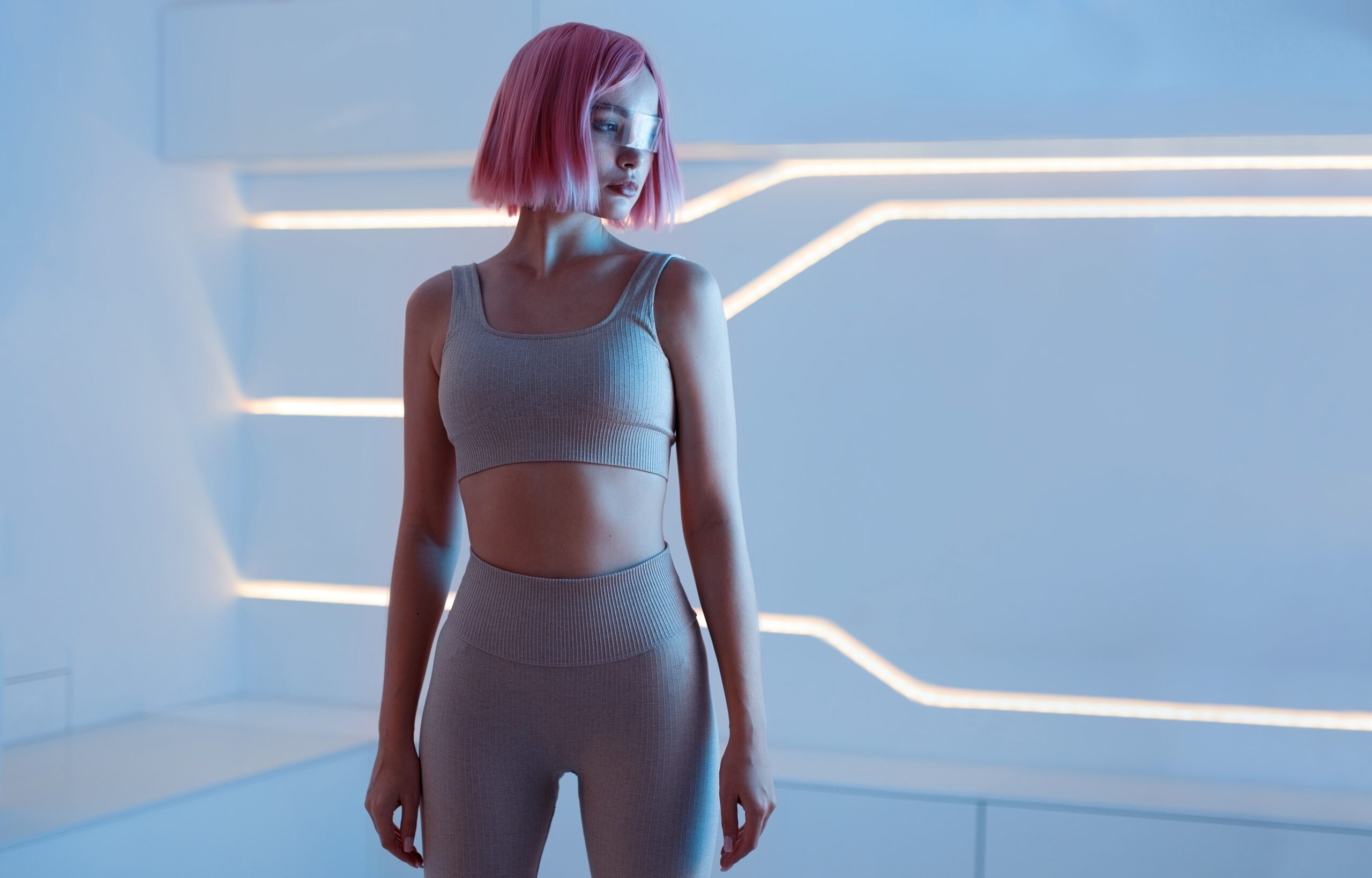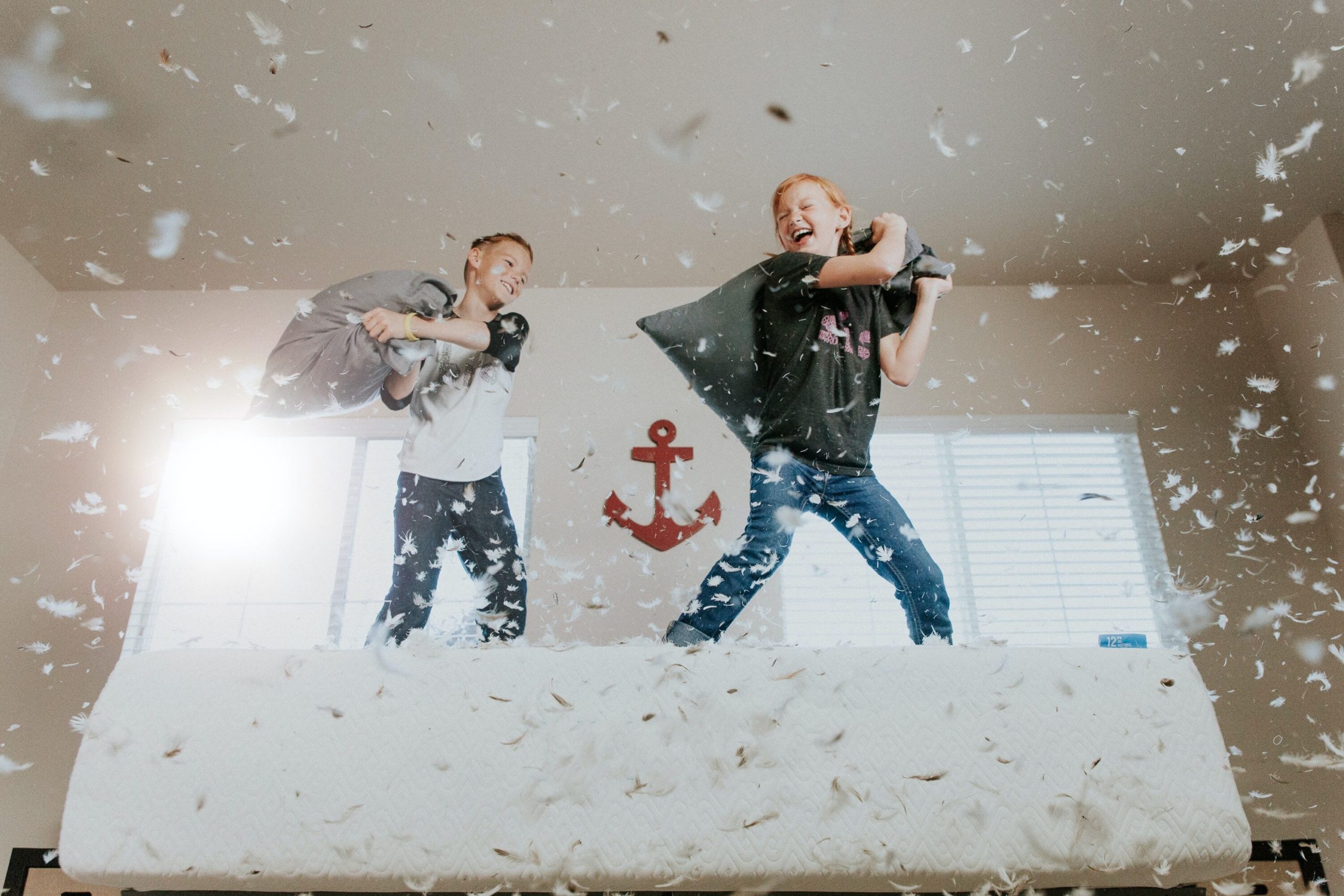The key trends that are transforming the way retailers sell, consumers shop and everything in between.
Whether you are a fully paid up member of the fashion industry or a card carrying member of the dress-to-impress, shop-til-you-drop consumer base, you want to be ahead of the curve with the latest 2023 fashion trends. Of course, fashion trends don’t just mean which silhouette or which color is in season, it also signifies the new global direction of the industry.
Market research and a close examination of the past few seasons are revealing wider industry trends worth paying attention to. Are top fashion brands moving away from print advertising to influencer campaigns? Are annual London Fashion Weeks putting more emphasis on digital presentations?
To be a true fashion obsessive you need to have your finger on the pulse of everything, not just which Louis Vuitton dress looks cute with which Acne Studios bucket hats.
For those interested in a deeper look at the apparel industry, who want to turn knowledge and industry insight into workable solutions for their own businesses, we compiled some essential pointers. And for those who simply desire knowledge that goes beyond the looks, styles and accessories we’ve put together an overview of the big industry digital fashion trends you need to look out for.
NFT fashions go mainstream
While Fashion trends come and go, one thing that has been steadily seeing more coverage and inclusion is NFT technology. Many digital tools start as novelties, as early adopters play with the technology and the wider community looks on.
In 2017 Snapchat launched 3000 augmented reality filters and as their popularity exploded, the rest of the social media platforms swiftly followed. By 2021, 120 Million Americans were engaging with AR every month. Mapped onto a moving face, these AR filters can ‘yassify’ skin, change eye colour, turn the user into a baby, apply ghoulish makeup and so much more. In 2023 platforms will begin looking to augment our wardrobes too.
The same AR filter technology can allow users to virtually try on clothing and accessories before they buy. Apps such as Dress X go further and encourage users to try on virtual clothing and buy meta fashion from their digital-only fashion store. Using NFT technologies users can build a virtual wardrobe of digital outfits just as they might have a digital music collection.
Furthermore, fashion has always appealed to the collectors and curators and the likes of uber trendy brand Karl Lagerfeld saw fit to capitalize by offering collectable NFTs that were simply small scale avatars of the legendary designer. As the past few seasons have shown, fashion no longer needs to be physical, (it doesn’t even need to be fashion) and so all of us could be virtually projected into an NFT Oscar de la Renta dress for our prom photo or simply start shopping for non wearable, NFT collectibles to own a rare creation by our favorite designer.
While the exact way NFT fashions will be integrated into our lives is currently up for grabs, the idea of our digital selves owning digital apparel, or collectibles is now being normalized. This is likely to be the year when owning an AR jumpsuit became as normal as downloading a novel to your Kindle.
AI can better manage stock and logistics
Maybe not the sexiest topic in the Fashion World, logistics is still a major area of cost and concern to businesses owners. Recent years have seen a shocking uptick in the cost of basic deliveries and raw materials. When supply chains become complicated and waste can make or break profits, businesses need tools that can help them operate efficiently and smartly.
Pattern recognition and visual connections are some of the things that make humans truly remarkable. We can effortlessly discern patterns because we integrate what we see with information stored in our memories. In business, we can instinctually learn from basic market research and experience, to predict consumers’ shopping behaviors. In the environment, we can examine the weather today to predict the weather tomorrow. We are pattern recognition machines, but we are not at the top of the food chain.
The development and widespread adoption of Artificial Intelligence has taken the top spot. Sophisticated machine learning can analyze billions of diverse data points and establish new connections that would take the human brain centuries to arrive at. These algorithms fed the right data can offer more precise predictions in every area of human endeavor. In 2023 they are now available to companies to better manage their stock, inventory, production and supply chains.
Now, more companies are able to access the power of AI to anticipate demand, determine production and reduce waste. Not only is this a top priority for the clothing industry accused of ongoing environmental wastage, but it helps better manage overall costs. Companies like Mintsoft and Peak are offering AI services to retailers now.
Brands with personalized shopping experiences and fluid UX win big
The internet has evolved and is still evolving. We began with web 1.0 where the user passively consumed static content such as news and directories made by a select community with special coding skills. Web 2.0 introduced dynamic content and connectivity: video, music, blogs, podcasts and social networks were suddenly ubiquitous. Everyday users could now use tools to create that content without knowing how to code.
2023 brings us closer to the era of web 3.0 where the internet understands the needs of the user and the information it presents. The internet experience will become more tailored to the user with search results no longer simply based on tags, but on the search engine assessing the content of a page and understanding it as a human would.
With web 3.0 the internet understands context, content and demand. As more shoppers see intelligent recommendations as they browse online for clothes they become accustomed to the power of web 3.0 and expect their shopping UX to become better with every visit. Just as Netflix predicts what viewers might want to watch next based on their previous consumption, consumers now expect to visit an online store and see outfits picked out especially for them.
With Sizer technology, the essence of this personal shopping experience can extend to include a smart understanding of the customer’s measurement and sizing. Using just the front-facing camera of a mobile device consumers can capture their body measurements to ensure a more perfect fit when they shop online. For businesses, this sizing data helps optimize their sales and by combining past shopping data, customer-specific sizing and AI, they create a personal UX that leaves their rivals in the dust.
AI can better manage stock and logistics
Pattern recognition and visual connections are some of the things that make humans truly remarkable. We can effortlessly discern patterns because we integrate what we see with information stored in our memories. In business, we can instinctually learn from past experiences to predict consumers’ shopping behaviors. In the environment, we can examine the weather today to predict the weather tomorrow. We are pattern recognition machines, but we are not at the top of the food chain.
The development and widespread adoption of Artificial Intelligence has taken the top spot. Sophisticated machine learning can analyze billions of diverse data points and establish new connections that would take the human brain centuries to arrive at. These algorithms, when fed the right data, can offer more precise predictions in every area of human endeavor. And now they are available to companies to better manage their stock, inventory, production and supply chains. In 2022 more companies will be able to access the power of AI to anticipate demand, determine production and reduce waste. Not only is this a top priority for the fashion industry accused of ongoing environmental wastage, but it helps better manage overall costs. Companies like Mintsoft and Peak are offering AI services to retailers now.
Brands with personalized shopping experiences and fluid UX win big
The internet has evolved and is still evolving. We began with web 1.0 where the user passively consumed static content such as news and directories made by a select community with special coding skills. Web 2.0 introduced dynamic content and connectivity: video, music, blogs, podcasts and social networks were suddenly ubiquitous. Everyday users could now use tools to create that content without knowing how to code. We are entering into the era of web 3.0 where the internet understands the needs of the user and the information it presents. The internet experience will become more tailored to the user with search results no longer simply based on tags, but on the search engine assessing the content of a page and understanding it as a human would. With web 3.0 the internet understands context, content and demand. As more shoppers see intelligent recommendations as they browse online for clothes they become accustomed to the power of web 3.0 and expect their shopping UX to become better with every visit. Just as Netflix predicts what viewers might want to watch next based on their previous consumption, consumers now expect to visit an online store and see outfits picked out especially for them.
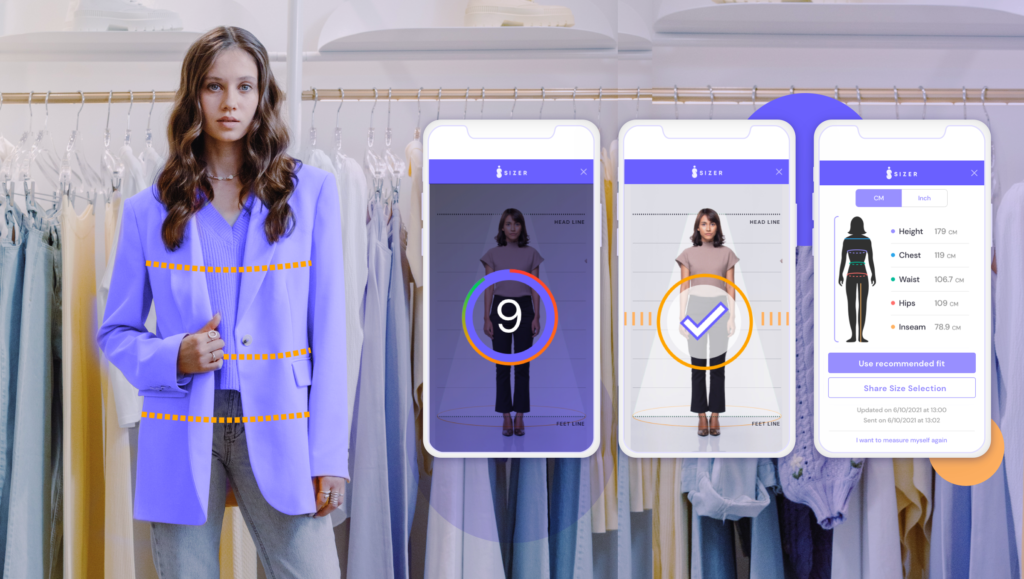
With digital body measuring solutions like Sizer , the essence of this personal shopping experience can extend to include a smart understanding of the customer’s measurement and sizing. Using just the camera of a mobile device, consumers can capture their body measurements to ensure a more perfect fit when they shop online. For businesses, this sizing data helps optimize their sales and by combining past shopping data, customer-specific sizing and AI, they create a personal UX that leaves their rivals in the dust.
…and the rest
In 2022 digital fashion will continue to challenge our norms, perceptions and habits. Digital-first clothing brands will continue to experiment with high street infrastructures creating novel in-store experiences. Brands will be under increasing pressure to demonstrate their commitment to sustainability with consumers expecting verifiable digital assurances. Fashion is always evolving, and the fashion industry is well placed to adapt to radical change. In 2022, technology, culture and the consumer are aligned to see some of the biggest changes in decades. Brands that focus on developing technologies, manage their sustainability and stay focused on their UX will rise to the top.
Read also:
Six great tools to help grow your fashion business
Can digital tools help reduce the curse of post holiday season customer returns?
Never Miss Out
Sign up to receive our latest news and insights

Thank you!
we’ll keep you updated

